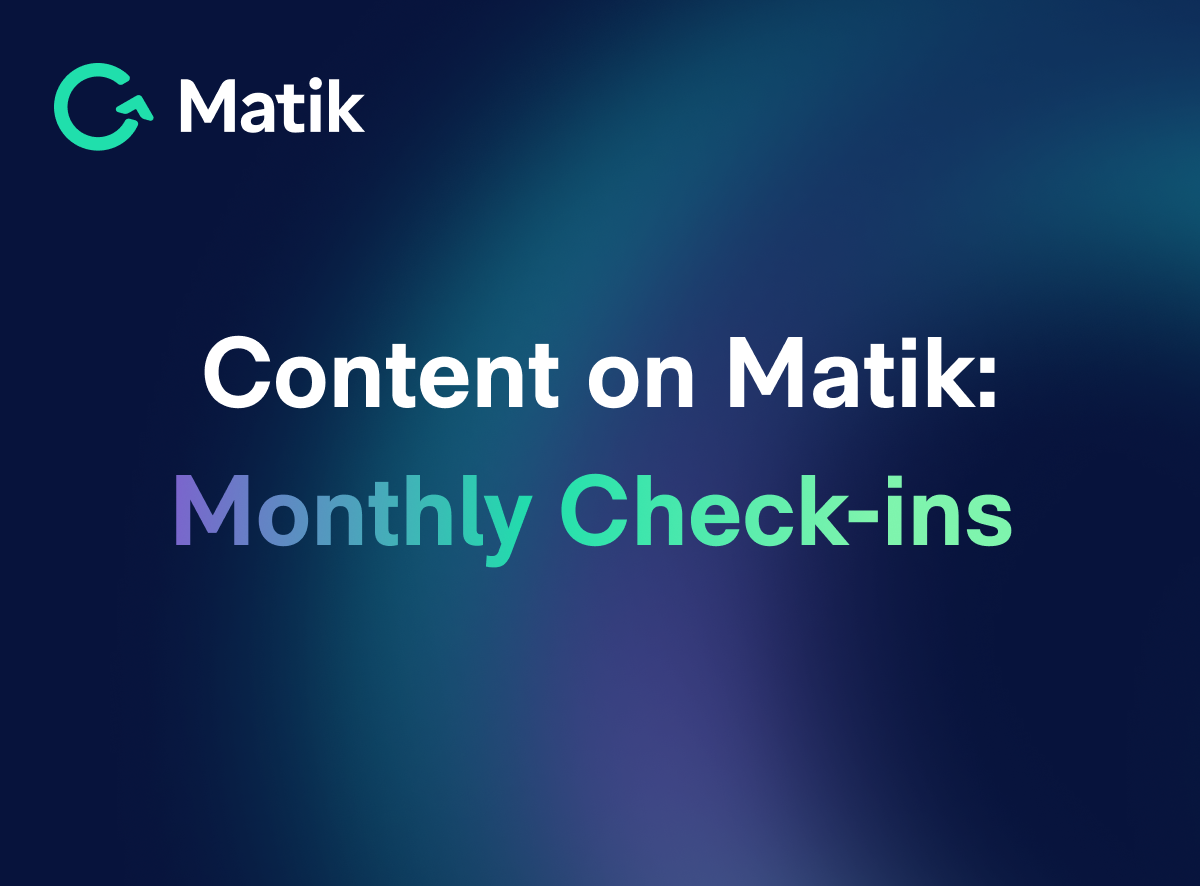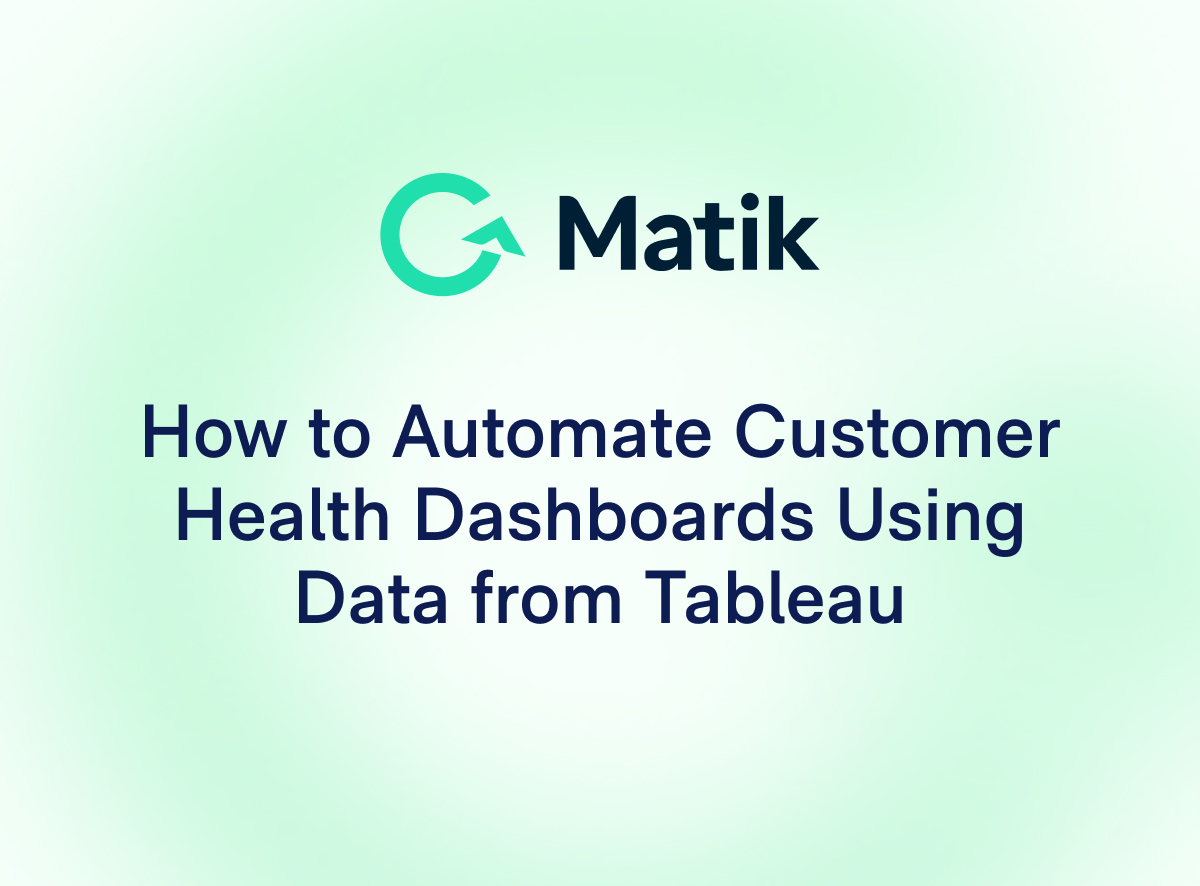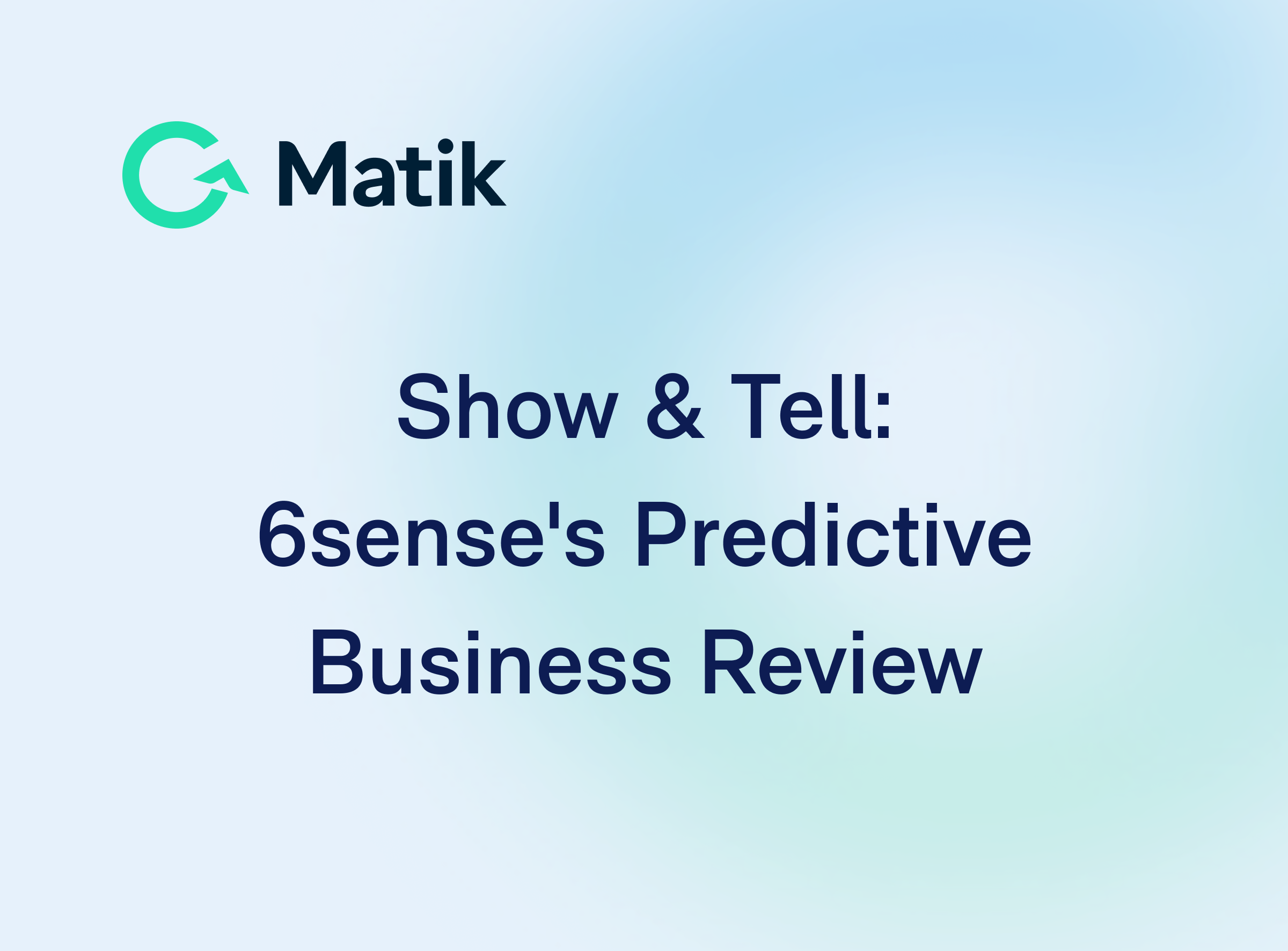Join Our Newsletter
Welcome to the latest post in our Content on Matik series. In this series, we will be taking a look at some of the innovative ways Matik customers have used data-driven storytelling to create compelling content, and build better relationships with their customers.
Meet the Monthly Check-In.
What is a Monthly Check-In?
A Monthly Check-In is a tailored, data-driven way to check in on your customer’s usage, track progress toward agreed-upon goals for the contract, and identify any problems in the account that could lead to renewal risk if left unchecked.
What is the value of a Monthly Check-In?
The high-level goal of a Monthly Check-In is to build a deeper and more informed understanding of your customer. By meeting with your customer monthly and structuring your conversation around quantitative data, you can provide informed recommendations about their usage and their progress to date.
A monthly meeting cadence in which you build this trust and credibility with your customer can also open the door to important conversations about their business, their pains, and their larger business goals. This information can then inform how you talk about the value you’re building with your customer, and how you assess the health of the account.
Down the line, this deep relationship and insights you gain from it can be the difference between an account that renews at an upsell, and an account that churns.
What is in a Monthly Check-In?
Because a monthly check-in happens on such a regular cadence, we recommend using a one-pager as the format for the accompanying presentation. The one-pager should follow the same structure every time, and should start at the top with the account name, the date, and your photo, if you are the rep on the account.
Below this header, the first third of the one-pager should be dedicated to the high-level metrics that you and your customer agreed upon at the start of their contract.
Let’s say you set a goal to get 80% of their users into the product at least at 1x weekly. On the left side of this first section, show your stakeholder how many total users have been active at this frequency since the start of the contract, and then show them how that translates to a percentage. Then, on the right side, insert a pie chart or some other similar graphic that shows your stakeholder how many users out of their total seat count have been active in the past month.
The second third of the one-pager should dive deeper into these important metrics, and if possible, add a personal touch.
If we follow the example from above, you could have a leaderboard in this section that shows usage by rep, and calls out the most active user on the team (e.g., "John Smith is the biggest power user on your team"). Then tie John’s usage back to a metric that your stakeholder cares about - for example, time savings, and show them the value that just John has seen from your product (e.g., "John's usage of 3x per week has led to 25 saved hours since the start of the contract").
This second section should also contain data on any issues your customer has experienced over the past month, and be used to open up a conversation around how you plan to address any problems.
Lastly, use the third section of the one-pager to visualize the most important metric for success that your customer cares about.
Is it their team’s user experience? Include a user quote that touches on the value of your product. Is it the number of hours saved from usage of your product? Include a line graph that shows how the number of hours saved has grown over time as usage has grown.
If you share these insights in a Monthly Check-In proactively and consistently, it will not only be a helpful conversation starter, but also an easy way to create a 360-degree account view that is consumable and shareable and can help you diagnose an account’s health.
The natural byproduct of this is that you can improve the customer relationship, uncover what questions should be asked and reveal areas of opportunity, and ultimately achieve better business outcomes and a better customer experience.
In Short
A Monthly Check-In is a tailored, data-driven way to check in on your customer’s usage, track progress toward agreed upon goals for the contract, and address any blockers that could lead to renewal risk down the line.
---
See Matik in Action—Request a Demo















